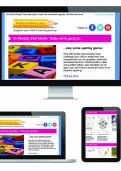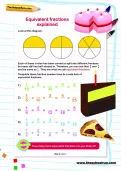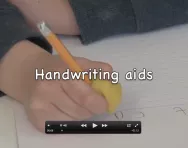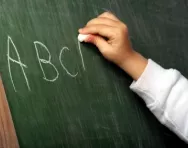Important update from TheSchoolRun
For the past 13 years, TheSchoolRun has been run by a small team of mums working from home, dedicated to providing quality educational resources to primary school parents. Unfortunately, rising supplier costs and falling revenue have made it impossible for us to continue operating, and we’ve had to make the difficult decision to close. The good news: We’ve arranged for another educational provider to take over many of our resources. These will be hosted on a new portal, where the content will be updated and expanded to support your child’s learning.
What this means for subscribers:
- Your subscription is still active, and for now, you can keep using the website as normal — just log in with your usual details to access all our articles and resources*.
- In a few months, all resources will move to the new portal. You’ll continue to have access there until your subscription ends. We’ll send you full details nearer the time.
- As a thank you for your support, we’ll also be sending you 16 primary school eBooks (worth £108.84) to download and keep.
A few changes to be aware of:
- The Learning Journey weekly email has ended, but your child’s plan will still be updated on your dashboard each Monday. Just log in to see the recommended worksheets.
- The 11+ weekly emails have now ended. We sent you all the remaining emails in the series at the end of March — please check your inbox (and spam folder) if you haven’t seen them. You can also follow the full programme here: 11+ Learning Journey.
If you have any questions, please contact us at enquiries@theschoolrun.com. Thank you for being part of our journey it’s been a privilege to support your family’s learning.
*If you need to reset your password, it will still work as usual. Please check your spam folder if the reset email doesn’t appear in your inbox.
17 helpful reading aids for dyslexic children

Reading and love of reading is a continuous process. There will be no quick fix with a dyslexic reader, but with constant encouragement and motivation your child can learn to love books and develop as a reader. Try to cherry-pick the tips that suit you and your child and incorporate them into your everyday life. Most importantly, keep at it!


Start a unique learning programme!
- Weekly programme for each school year
- Worksheets sent direct to your inbox
- Keeps your child's learning on track
1. Choose literature in the right font. Where possible, find writing in a sans serif font (such as Arial or Verdana).
2. Make sure the text size isn’t too small. Make sure text is at least 12pt. Go larger if possible.
3. Where possible, use lower-case letters rather than capitals. Avoid text that uses lots of capital letters for emphasis.
4. Avoid white paper. If producing your own texts, try to print on cream or a pastel-colour paper. Avoid green and red font colours, too, as these can sometimes cause readability problems.
5. Remembering b and d. Use the ‘bed trick’ to remember which way around b and d go. Encourage your child to hold three fingers in their left hand at the beginning of the word to make a b shape and do the same with their right hand at the end for the d.

6. Get your mouth ready. Teach your child to get their mouth ready to form a sound before they start to read each letter. This triggers a sensory experience which can aid recall.
7. Consider an iPad or Kindle. Many dyslexic readers find these easier to use as the screen is bright and text is divided into smaller parts. It’s also less daunting than being faced with page numbers.
8. Use magnetic cursive letters. These are foam magnetic letters, colour coded into their sound groups (such as ck, fr, sn), which make it easier for your child to form words and remember letter combinations.
9. Use multisensory letters. Use pipe-cleaners, ribbons and other materials (even biscuit dough!) to get your child used to the shape of the letter. This helps them form multisensory memories and consolidates letter shapes and how they are formed.
10. Invest in a vowel sound dictionary such as the ACE Spelling Dictionary by David Moseley (£13.99, LDA). Though more useful for writing, it will aid the relationship between words read and sounds made.
11. Use tinted overlays for text to make reading easier. You can buy these in packs of different colours and choose one which suits your child’s needs best.
12. Get a virtual reading ruler. This is a mobile tinted overlay which reduces screen glare and floats above any application and is moved around the screen with a mouse. You can create a different variety of opaque windows.
13. Have your child assessed with a Colorimeter for coloured lenses. With coloured lenses, the child’s entire field of view will be coloured. This works very well with particularly colour-sensitive dyslexic readers.
14. Look for websites that use software such as Browsealoud.These will read words aloud and highlight text as it is read. It’s free but the website has to be enabled first.
15. Claro Software offers speech-enabling and magnification software (there’s also the option to invert screen colours and change contrast).
16. The C-Pen range of portable scanning and reading pens can be very helpful for dyslexic children. Users can scan and insert text using a touch screen and portable keyboard. They can hear the text spoken aloud and get correct pronunciations.
17. Try the KAZ (Keyboard A-Z) accelerated learning system to teach your child to touch type, making it easier to do creative writing tasks and homework. You might also want to look for keyboards with large keys or large letters on.









